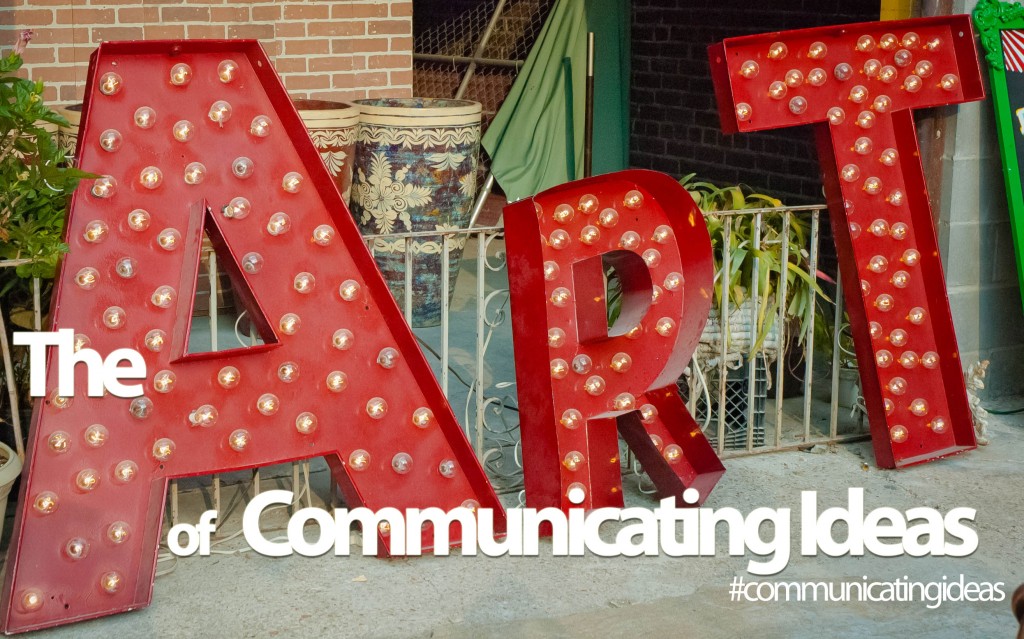by David Tyler | Sep 11, 2013 | Advertising, Art of Communicating Ideas, Branding, Copywriting, Emotional Marketing, Marketing, Public Speaking, Radio, Radio Imaging, Videos, Web Design

I‘ve worked in and studied the art of communicating ideas for over 25 years. To me, how we communicate ideas to each other is a never ending fascination.
Today we live in what my friend Nick Michaels calls “the over communicated world”, with a never ending stream of new and interesting ways to connect through traditional and digital channels.
The purpose of this blog is to explore, understand and craft the way we communicate: verbally and visually, theoretically and practically, informally and professionally.
If you work in the media or are simply a casual student, this blog promises to inspire and intrigue.
Subscribe now to be sure you don’t miss a thing!
by David Tyler | Mar 26, 2009 | Advertising, Branding, LinkedIn, Marketing, Marketing Small Business, New Media
Well, I’ve finally gone and done it, I’ve just stepped on to the Twitter stage. After months of considering adding it to my social media network I gave in to the urge. Whether you’re already in it or considering adding social media to your mix of communication devices here are 3 simple rules to remember:
1. Pull, don’t push. Social-media newbies often make the mistake of being too aggressive. Some people might respond to new Twitter followers with a ‘Thanks for following. Visit my Web site for a free … [insert whatever promotional message you’ve seen.].’ Social networks are about conversations that build relationships, not indiscriminate come-ons.
2. Forget about social-network omnipresence. No one expects you to be everywhere, choose the sites frequented by your customers/clients. At minimum, establish a presence at the big three. Think of them this way: LinkedIn is your business suit, Facebook is business casual, and Twitter is the 24/7 ongoing cocktail party.
3. Be yourself. If it’s still available, use your own name as a handle and your headshot as an avatar, even if you’re networking on behalf of your company. I believe that in social media people would rather relate to and build trust with other PEOPLE, rather than brands.
As quickly as social networking media is developing so are the rules of the game. Making yourself familiar with online protocol will smooth your path to online success.
Join me on LinkedIn, Facebook and now Twitter.
by David Tyler | Dec 3, 2008 | Advertising, Branding, LinkedIn, Marketing, New Media

Well, as I get ready to go back to school to start teaching some of the things I’ve learned over the years as a small business owner along comes this new book called “Buyology: Truth and Lies About Why We Buy,” by marketing wizard Martin Lindstrom. The book is based on a research project that Lindstrom conducted over three years. He and his team used functional magnetic resonance imaging (fMRI) and electroencephalography (EEG) technology to understand what happens in consumers’ brains as they are exposed to advertising and specific brands. This research falls under a body of marketing called neuromarketing. And hold on to your hat because it shatters some previously hardcore beliefs about marketing!
- Fear sells, sex doesn’t. Our primal instinct as human beings is to survive; therefore, fear and sex are key. Fear relates to our survival: Do I have enough to eat? Will I have enough money when I retire? Is that product safe? Sex relates to procreation. In this respect, Lindstrom claims that political fear-based advertising is effective because it taps into our primal concerns of survival. Sex-based advertising, however, overwhelms us physically, so all we take away is the sexual part and we disregard the brand associated with it.
- Pass the cigarettes, please. Did you know that global cigarette smoking has increased 13 percent and that warning labels are part of the reason? In fact, Lindstrom’s findings suggested that the warning labels stimulate the nucleus accumbens, a region of the brain that increases cravings. Tobacco companies have actually been able to increase sales even though cigarette advertising has been banned in most countries.
- Forget product placements. This is a hard one to swallow, but according to the research 99 percent of product placements are completely ineffective. What about the 1 percent? The only effective product placements integrate into the content in a completely meaningful way. Here’s a way to test it out: if your brand can be replaced with any other brand and it wouldn’t make any difference, your sponsorship or product placement is probably a waste of money. However, if the addition or removal of your brand would affect the environment’s context, you’re probably on the right track. Think of “American Idol.” AT&T is a good integration, Coca-Cola is ok, but Ford isn’t good at all.
- Logos are meaningless. In many cases, it’s preferable to not even have a logo on your advertising.
- Advertising agencies should hire rabbis, priests, and imams as consultants. Lindstrom claims that strong brands are like religions and how a Catholic feels when viewing an image of the Virgin Mary is how a brand evangelist feels when experiencing his brand affinity. Brands should try to create rituals that are similar to religious rituals. Think about green bean casserole and Thanksgiving. The two are so connected that one of the key ingredients, French Fried Onions, probably wouldn’t even exist if it wasn’t for this holiday and the classic American dish.


